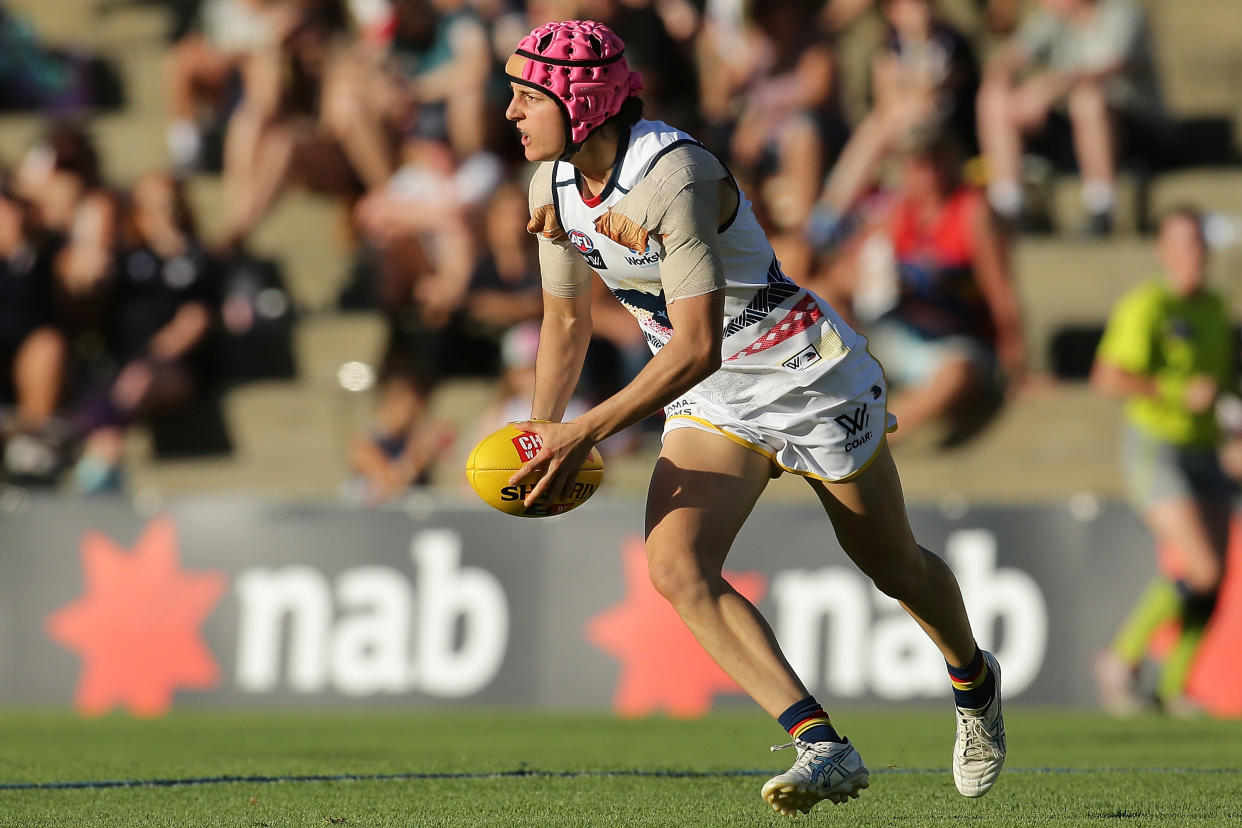#CTE diagnosed in professional female athlete for first time [Video]
![#CTE diagnosed in professional female athlete for first time [Video]](https://s.yimg.com/ny/api/res/1.2/z9Nv5AJOlLxbP0Au9X37lg--/YXBwaWQ9aGlnaGxhbmRlcjt3PTEyMDA7aD04MDA-/https://media.zenfs.com/en/aol_yahoo_sports_800/50b17dfad8261ef2aa39febf8ac2206e)
Chronic traumatic encephalopathy, known as CTE, has largely been connected with men who played American football. But it’s not just a men’s disease.
Scientists at the Australian Sports Brain Bank announced Monday that Heather Anderson, a former Australian rules football player, has become the first professional female athlete to be diagnosed with CTE, a degenerative brain disease caused by repeated traumatic brain injuries.
Anderson’s family donated her brain to ASBB after she took her own life in 2022 at the age of 28. She played contact sports (Aussie Rules and rugby league) pretty much her entire life, and after years in youth leagues she was drafted into the women’s Australian Football League in 2016. Numerous injuries — including one confirmed concussion that caused her to wear a helmet — led to her retirement after just one season. She later became an army medic.

Athletes in high-contact sports like American and Australian football, hockey, rugby, boxing and MMA are particularly at risk of developing CTE. But due to the small number of high-contact professional sports for women and the worldwide publicity of the NFL’s CTE scandal, the focus of CTE has largely been on men. But according to ASBB director Michael Buckland, CTE doesn’t look any different in a woman’s brain than it does in a man’s.
“There were multiple CTE lesions as well as abnormalities nearly everywhere I looked in her cortex. It was indistinguishable from the dozens of male cases I’ve seen,” Buckland said.
Chris Nowinski, CEO of the Concussion Legacy Foundation, told Al-Jazeera that Anderson’s “landmark” diagnosis should be a “wake-up call for women’s sports.”
“We can prevent CTE by preventing repeated impacts to the head, and we must begin a dialogue with leaders in women’s sports today so we can save future generations of female athletes from suffering,” Nowinski said via ESPN.
If you liked the article, do not forget to share it with your friends. Follow us on Google News too, click on the star and choose us from your favorites.
For forums sites go to Forum.BuradaBiliyorum.Com
If you want to read more News articles, you can visit our News category.




